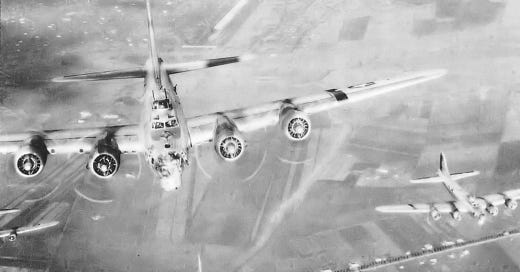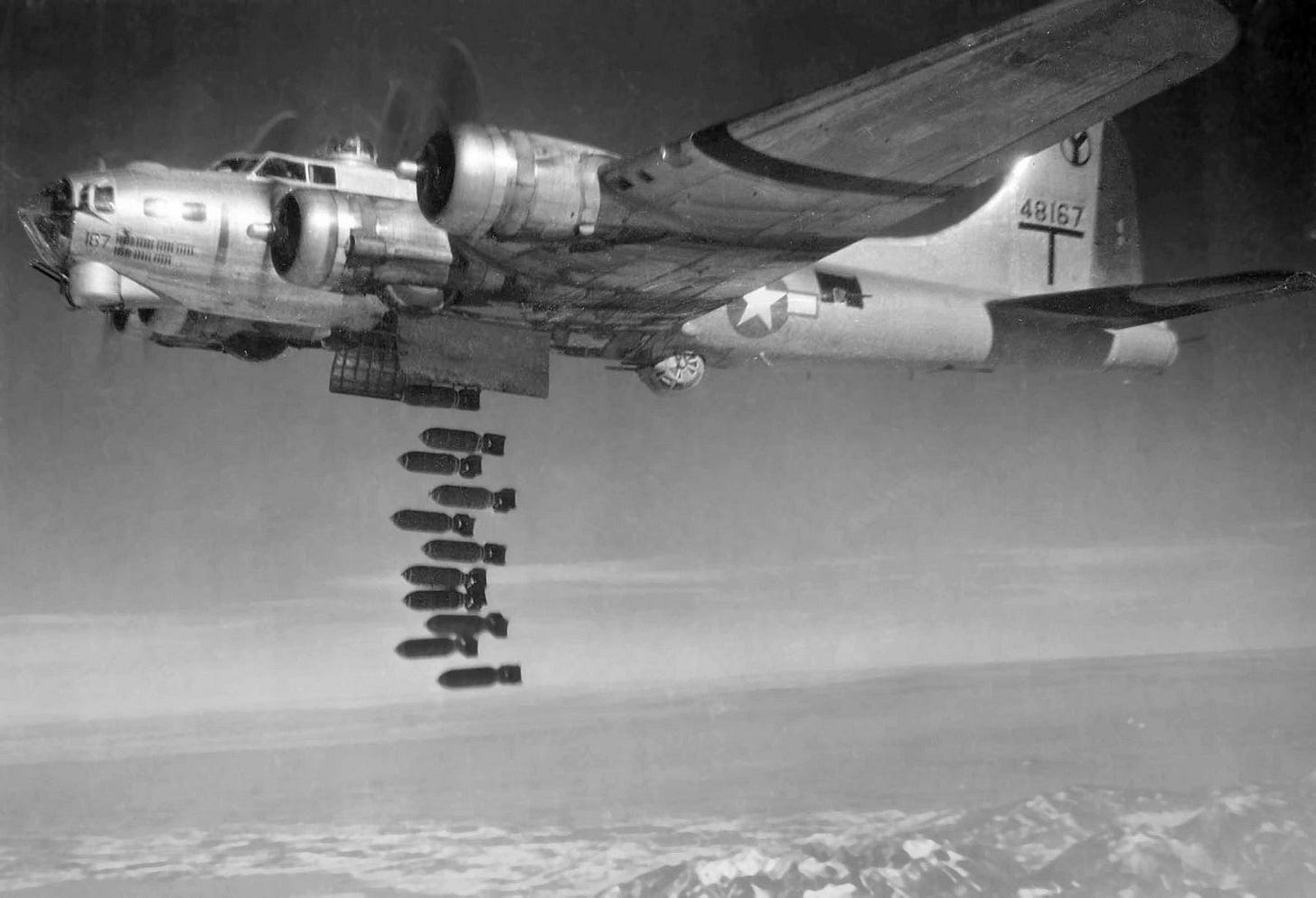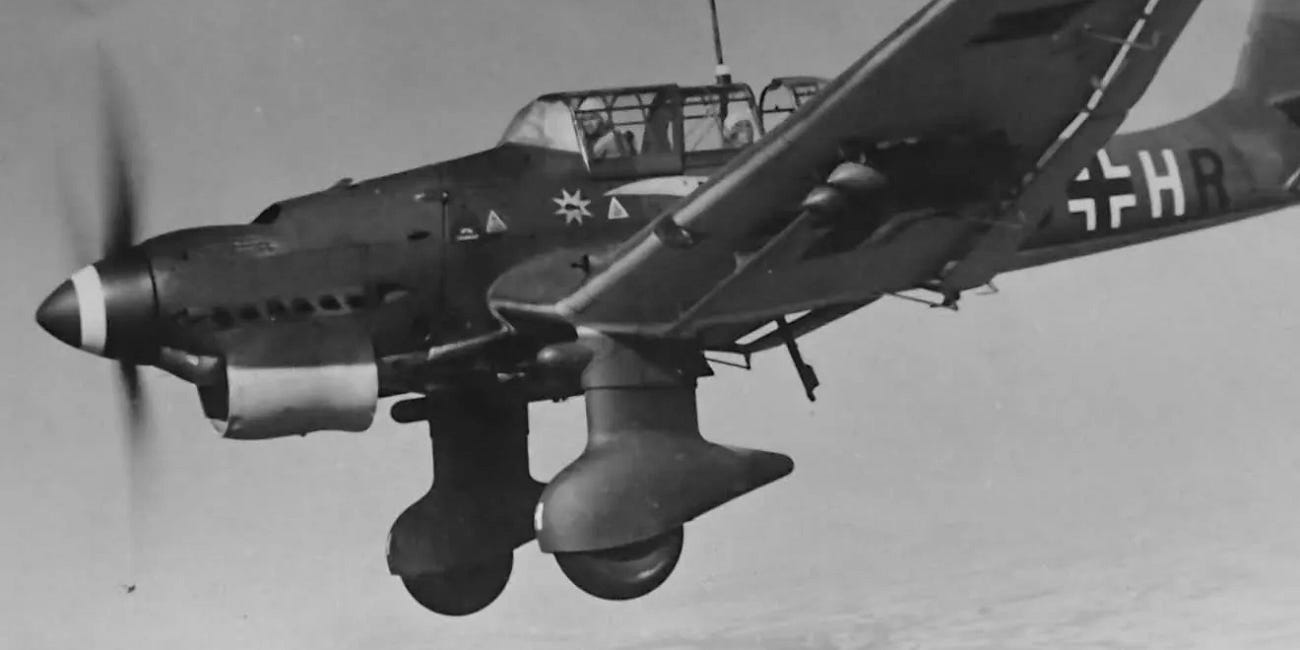In 1943, Piloting a Flying Fortress Over Italy Was One Frightening Job
A B-17 pilot wrote home about gutsy attacks from Italian fighters
by ROBERT BECKHUSEN
The Italian campaign was the bloodiest conflict—in terms of soldiers who lost their lives—in the West during World War II. More soldiers died there than in North Africa, France or during the Allies’ advance into Germany.
American bomber pilots flying from North Africa also met fierce resistance and suffered high casualty rates. But their bombing runs were necessary to destroy Axis airfields before the July 1943 invasion of Sicily and the hop onto the mainland that September.
On that note, I recently received a copy of A WWII Journal: January 4, 1942-January 7, 1946 by Randy Graham, whose father R. Bruce Graham served as the pilot of a B-17 Flying Fortress based in North Africa with the U.S. 301st Bomb Group, and who was wounded in combat during the Italian campaign.
Self-published family histories of this kind usually have small readerships, and Randy initially set out to write the book for his son. But such books are valuable primary sources and can provide a close-up, day-by-day view of what the war was like for the people who fought it.
A WWII Journal is primarily based on Bruce Graham’s letters and his wartime diaries. War is, after all, mostly dull but punctured with brief moments of unimaginable terror. Graham, then in his early 20s, had these experiences.
An important lesson—don’t underestimate your enemy. He came away with a respect for Italian fighter pilots in the Regia Aeronautica as they tried to shoot him down over Sicily in July 1943. From the crews’ perspective, the Italians were a deadly and formidable enemy.
“We’ve got no easy assignment over here, Vic,” Graham wrote to Merced Bee columnist Vic Reich that month.
“And don’t be fooled by the wishful thinkers that the Italian’s [sic] can’t fight. In the air, they are plenty tough, and have ample guts. I know—I was wounded by an Italian fighter that couldn’t be scared off by my gunners. And now, they are getting twice as tough. You know the weakest guy in the world is going to put up a damn good battle when they try to drive a car through his house.”
During a mission in May 1943, Graham was flying in formation when Italian fighters attacked the American bombers. “I had leaned forward to adjust one of the instruments and—bop—I was hit.”
He spent three weeks recovering in a hospital after doctors removed a 14-by-26-millimeter chunk of shrapnel from his right arm.
Heavy wartime censorship restricted Graham from describing bomber operations in great detail, but he frequently wrote home, candidly, about battles while leaving out the where and when. Randy, his son, helps fill in some of these details.
“All this time you’re sweating out the time the bombardier drops his load of death and you can tell, because all of a sudden the plane lifts like it was sighing because it got a load off its shoulders,” Graham wrote. “Then you feel a helluva lot better, because you’re rid of all that explosive.”
There is a tonal shift in the diaries. Earlier entries focused on training and the mundane realities of traveling across the Atlantic and living in North Africa. “Tues. Feb. 3, 1943: Went to Batna! Got stinko. Ate French sausage. Never again.”
As he began flying combat missions, the entries bounced emotionally between excitement and anxiety—even horror. But they’re always blunt, short and honest. “Hot raid today! Sank two Italian cruiser. No resistance at all. Sure am tired,” read one. “Leveled airfield. Saw Captain Jolian[?] go down! Ungodly!” stated another.
Then this—“Terror raid on Palermo. Bombed town—laid it level! Flew through a solid wall of flak but no damage sustained to ship. Only lost one bomber (B-17). I was scared stiff. Never been so scared before. Seemed a shame to kill innocent people but given it had to be done—will probably have more such raids in near future.”
There are more interesting anecdotes. In 1943, the Western alliance system was still a fairly recent construct. The French in North Africa didn’t like the British. The Americans and British were allies, but many service members distrusted each other along national lines.
Regional rivalries within the United States were also stark. Graham, who was from California, mentioned a persistent feud between Californian service members and Texans who “don’t even consider Texas as part of the States but as part of the ‘Texas Empire.’”
“Sure makes me mad.”
As a Texan I can add that while this seems unbelievable, I easily believe this. Although the talk of a Texas “Empire” is long dead, a lingering attitude owed itself to the late-1830s Texan president Mirabeau Lamar who wanted an Imperial Texas to stretch to the Pacific. Ironically, his presidency left the republic deep in debt which later contributed to Texas abandoning its independence.
I laughed at that absurd but authentic glimpse at the rival cultures of 1940s-era American airmen. But I also finished A WWII Journal humbled by Bruce Graham’s considerable courage and thankful that Randy Graham preserved his father’s story for his family and the historical record.
Read more:







